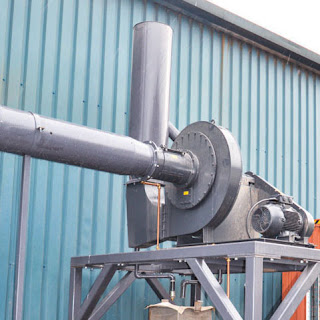Enhancing Indoor Comfort: The Role of Dehumidification Systems in Maintaining Optimal Environments
In the realm of indoor air quality and climate control, dehumidification systems play a crucial role in creating a comfortable and healthy living or working environment. Designed to regulate and reduce humidity levels, these systems effectively minimize excess moisture in the air, preventing the growth of mold, mildew, and other harmful allergens. From residential homes to large-scale commercial buildings, dehumidification systems have become essential tools for maintaining optimal indoor air quality and promoting overall well-being.
Humidity Control for Health and Comfort:
Dehumidification systems are instrumental in controlling indoor humidity levels, creating a comfortable and pleasant living or working environment. By removing excess moisture from the air, these systems prevent the onset of excessive heat and discomfort, ensuring that occupants can enjoy a cool and refreshing atmosphere even during humid weather conditions. This control of humidity levels not only enhances overall comfort but also contributes to improved respiratory health and a reduced risk of allergic reactions associated with mold and mildew.
Prevention of Mold and Mildew:
Excessive moisture in indoor spaces can lead to the proliferation of mold and mildew, posing a significant risk to both the structural integrity of buildings and the health of occupants. Dehumidification systems effectively combat this issue by maintaining optimal moisture levels, preventing the accumulation of condensation on walls, ceilings, and other surfaces where mold and mildew thrive. By inhibiting their growth, these systems contribute to the preservation of building materials and the promotion of a healthier indoor environment.
Energy Efficiency and Cost Savings:
Dehumidification systems play a crucial role in enhancing energy efficiency and reducing operational costs associated with heating and cooling. By maintaining balanced humidity levels, these systems alleviate the strain on air conditioning units, allowing them to operate more efficiently and consume less energy. This energy-saving aspect not only reduces utility bills but also contributes to the overall sustainability and eco-friendliness of the building, making dehumidification systems a valuable investment in long-term cost savings and environmental preservation.
Preservation of Valuables:
In environments with high humidity levels, valuable assets such as artwork, documents, and electronic equipment are at risk of damage from moisture-related issues. Dehumidification systems provide an added layer of protection by maintaining optimal humidity levels, thereby safeguarding these valuable possessions from the detrimental effects of excess moisture. By preserving the condition and longevity of these assets, dehumidification systems contribute to the overall maintenance of a safe and secure indoor environment.
Enhanced Air Quality and Well-being:
By effectively controlling humidity levels and minimizing the presence of allergens, dehumidification systems contribute to the overall improvement of indoor air quality. This clean and healthy air promotes better respiratory health, reduces the risk of allergic reactions, and enhances overall well-being for occupants, creating a comfortable and conducive environment for living, working, and relaxation.
In conclusion, dehumidification systems play a critical role in maintaining optimal indoor environments by regulating humidity levels, preventing the growth of mold and mildew, promoting energy efficiency, preserving valuable assets, and enhancing overall air quality and well-being. With their multifaceted benefits, these systems have become indispensable tools for ensuring the comfort, health, and safety of occupants in residential and commercial spaces alike.

.jpg)



Comments
Post a Comment